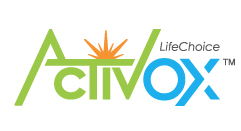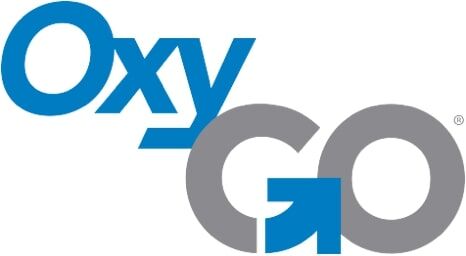Battery Powered Oxygen Concentrator Goes Up to 4 Continuous
![]()
Read our guide to select the best portable oxygen concentrator for you or a loved one. We explain how a portable oxygen concentrator is lighter and more comfortable to travel with than traditional oxygen tanks. Patients who require supplemental oxygen often prefer portable concentrators over tanks because of their convenience. They're battery-powered and sources oxygen from ambient air in the room, so they never has to be plugged in or refilled.
Why trust ConsumerAffairs?
- Our recommendations are based on what reviewers say.
- 4,053,936 reviews on ConsumerAffairs are verified.
- We require contact information to ensure our reviewers are real.
- We use intelligent software that helps us maintain the integrity of reviews.
- Our moderators read all reviews to verify quality and helpfulness.
About portable oxygen concentrators
What is a portable oxygen concentrator?
Portable oxygen concentrators are medical devices that deliver oxygen therapy to people who cannot source enough oxygen on their own. Portable oxygen concentrators weigh less and are easier to travel with than home oxygen devices.
How do portable oxygen concentrators work?
Unlike conventional oxygen tanks, portable oxygen concentrators source oxygen from ambient air and filter it through bed sieves to remove the nitrogen. The oxygen is then compressed in the machine before it is delivered to the user when it flows through a nasal cannula.
Compare Portable Oxygen Concentrator Reviews | ||||||
|---|---|---|---|---|---|---|
| Pure Medical | Read 66 Reviews | Prices for portable oxygen concentrators start at about $1,800 and vary depending on the custom packages put together. All major credit cards are accepted and financing is an option. |  | Chat with a ConsumerAffairs decision guide Live agent | ||
| Philips Respironics | Read 75 Reviews | Designs and manufactures medical supplies. Specializes in CPAPs and portable oxygen concentrators. CPAP prices start around $400 to $600. Products include the DreamStation machine, gel masks and full-face masks. |  | Chat with a ConsumerAffairs decision guide Live agent | ||
| Apria Healthcare | Read 1,594 Reviews | Provides rental Imogen portable oxygen concentrator units. Sleep therapy and supply refills, non-invasive ventilation therapy, negative pressure wound therapy and enteral nutrition support are also available. |  | Chat with a ConsumerAffairs decision guide Live agent | ||
| Inogen | Read Author Review | Shop 2 different models with 3 different packages each. Individual portable oxygen concentrators start as low as $2,295 with a 3-year warranty, while packages start at $3,195 with a lifetime warranty. |  | Chat with a ConsumerAffairs decision guide Live agent | ||
| LifeChoice Activox | Read Author Review | Three models available weighing between 3.9 and 4.8 pounds. Standard package provides up to 12 hours of battery life and additional external batteries are available. Manufacturer's suggested retail price is $3,495. |  | Chat with a ConsumerAffairs decision guide Live agent | ||
| O2 Concepts | Read Author Review | Shop the next level of portable oxygen concentrators, ranging in price from $2,850 to $3,705 with 5-year warranties. This company makes the world's first smart POC. |  | Chat with a ConsumerAffairs decision guide Live agent | ||
| Oxygen Concentrator Store | Read Author Review | Shop from 20 different models of new and used portable oxygen machines starting as low as $2,295. All models come with a 3-year warranty and can be ordered online. |  | Chat with a ConsumerAffairs decision guide Live agent | ||
| OxyGo | Read Author Review | Shop from 2 packages with financing options up to $10,000 for portable oxygen concentrators with a 3–5-year warranty. Get one of these lightweight medical devices through third-party providers of oxygen devices. |  | Chat with a ConsumerAffairs decision guide Live agent | ||
| Portable Oxygen Solutions | Read Author Review | Shop from 8 different lightweight products where prices can be matched to any USA POC retailer. All products come with a 3-year warranty, and a financing plan is available through PayPal Credit. |  | Chat with a ConsumerAffairs decision guide Live agent | ||
| Precision Medical | Read Author Review | Both EasyPulse POC-3 and POC-5 come standard with a 5-year warranty on the device and sieve beds and a 1-year warranty on the battery. EasyPulse can be purchased through your local Durable Medical Equipment provider. |  | Chat with a ConsumerAffairs decision guide Live agent | ||
Portable oxygen concentrator prices
How much do portable oxygen concentrators cost?
A new portable oxygen concentrator will likely cost between $1,400 and $3,500, depending on what batteries and other accessories are included. Lower prices can usually be found for used or refurbished portable oxygen machines. Some oxygen therapy device suppliers have financing options available.
*According to American Medical Sales and Rentals
How much does it cost to rent a portable oxygen concentrator?
The average cost of renting a portable oxygen concentrator is $840 per year, per unit. For qualifying patients, Medicare and other insurances may be able to reduce out-of-pocket fees for portable oxygen concentrator rentals.
Are portable oxygen concentrators covered by insurance?
In the United States, insurance companies are only required to supply medical equipment that maintains a patient's basic oxygen needs. Typically, a patient's basic oxygen needs can be met with less costly devices, and so it is unlikely the purchase of a portable oxygen concentrator will be covered by insurance.
Are portable oxygen concentrators covered by Medicare?
It is unlikely that Medicare will provide you with a portable oxygen concentrator. They are only required to meet patients' most basic oxygen needs, which can usually be met with less costly oxygen tanks.
Medicare coverage of portable oxygen concentrators dropped by 50 percent in 2013. Since then, respiratory equipment suppliers provide less costly oxygen tanks over high-dollar portable oxygen concentrators for Medicare patients. In the event you have to travel by plane, Medicare will not pay for a portable oxygen concentrator, though you may be able to rent one from your oxygen supplier.
Types of portable oxygen concentrators

Continuous flow portable oxygen concentrators
The most common type of oxygen concentrator delivers a steady stream of oxygen to users (home oxygen concentrators are always continuous flow units).
- Oxygen flow: delivers up to 3,000 mL of oxygen per minute
- Weight: 10–20 pounds
- Best for: Patients who require 2–5 liters of oxygen per minute. Continuous flow machines are typically heavier than pulse flow units and are recommended for use when sitting still or sleeping.
Pulse dose portable oxygen concentrators
With pulse dose units, oxygen is delivered to the user intermittently, in regular spurts based on the patient's breathing rate.
- Oxygen flow: delivers between 450 mL to 1,250 mL of oxygen per minute
- Weight: 2–10 pounds
- Best for: Patients who require less than 2 liters per minute of oxygen. Because pulse dose units are lighter than continuous flow portable oxygen concentrators, they are recommended for more active users.
Common questions about portable oxygen concentrators
Who needs oxygen therapy?
Those suffering from respiratory diseases like chronic bronchitis, emphysema, pulmonary fibrosis or certain heart problems and neuromuscular conditions are prescribed supplemental oxygen therapy to alleviate symptoms like headaches, dizziness, shortness of breath, visual disturbances, high blood pressure and rapid heartbeat.
Are portable oxygen concentrators dangerous?
Oxygen therapy creates a fire risk, as oxygen is highly flammable. You should never smoke near oxygen or use oxygen near an open flame. Oxygen concentrators shouldn't be used in small, unventilated rooms.
Can you travel with a portable oxygen concentrator?
Unlike oxygen tanks or liquid oxygen, oxygen concentrators are approved by the FFA for air travel. Individual airlines may have their own rules or regulations, like requiring a physician's statement of your medical need for oxygen. Be sure to bring enough batteries for the duration of your flight.
Portable oxygen concentrators FAQ
- Who needs oxygen therapy?
- Those suffering from respiratory diseases like chronic bronchitis, emphysema, pulmonary fibrosis or certain heart problems and neuromuscular conditions are prescribed supplemental oxygen therapy to alleviate symptoms like headaches, dizziness, shortness of breath, visual disturbances, high blood pressure and rapid heartbeat.
- Are portable oxygen concentrators dangerous?
- Oxygen therapy creates a fire risk, as oxygen supports combustion. You should never smoke near oxygen or use oxygen near an open flame. Oxygen concentrators shouldn't be used in small, unventilated rooms.
- Can you travel with a portable oxygen concentrator?
- Unlike oxygen tanks or liquid oxygen, certain oxygen concentrators are approved by the Federal Aviation Administration for air travel. Individual airlines may have their own rules or regulations, like requiring a physician's statement of your medical need for oxygen. Be sure to bring enough batteries for the duration of your flight.
- Is there a portable continuous flow oxygen concentrator?
- Yes, several companies offer portable continuous flow oxygen concentrators, which vary in features such as size, weight, capacity, battery life, noise level and warranty.
- What is the smallest portable oxygen concentrator?
- The Airsep Focus is the smallest portable oxygen concentrator. It weighs 1.75 pounds and is 6.4 inches tall.
- How long do portable oxygen concentrators last?
- The average life span of a portable oxygen concentrator is four to seven years. A portable oxygen concentrator's longevity depends on many factors:
- Brand/model
- Maintenance
- Usage settings
- How often you use it
- The environment
- How many hours does a portable oxygen tank last?
- The length of time a portable oxygen tank lasts mostly depends on its size:
- A small, A tank holding 113 liters lasts about 11 hours*.
- A medium, D tank holding 425 liters lasts about 41 hours*.
- A large, E tank holding 680 liters lasts about 64 hours*.
*Time calculated with a pulse dose. Continuous dose limits time considerably.
- Can you lay an oxygen concentrator on its side?
- Yes, during transport, you can safely store your portable concentrator on its side. When in use, it can be on its side as long as none of its vents are blocked.
- Can you get too much oxygen from a machine?
- Yes, there is an issue that can develop called pulmonary oxygen toxicity, where too much oxygen enters your system over time, damaging your lungs. Before you start oxygen therapy, your doctor carefully measures the oxygen levels you need through a variety of tests. These tests allow your doctor to prescribe the right dosage of oxygen.
- Do oxygen concentrators need maintenance?
- Yes, your oxygen concentrator needs maintenance. Even if it's described as low-maintenance, the machine will need cleaning and filter switching. You should get professional service on your concentrator every three months.
- Can you fly with an oxygen concentrator?
- The Federal Aviation Administration allows you to fly with a portable oxygen concentrator (POC) if it meets these criteria:
- The POC is marketed in the United States in accordance with U.S. Food and Drug Administration standards.
- The POC does not emit radio signals that are detrimental to the plane.
- The POC does not create compressed gas.
- The POC contains no hazardous materials (with certain exceptions for the battery).
- The POC has the proper labeling.
A list of POCs that meet FAA requirements is on the Transportation Security Administration website.
Disclaimer
Information in this guide is general in nature and is intended for informational purposes only; it is not legal, health, investment or tax advice. ConsumerAffairs.com makes no representation as to the accuracy of the information provided and assumes no liability for any damages or loss arising from its use.
gutierreztakey1995.blogspot.com
Source: https://www.consumeraffairs.com/health/portable-oxygen-concentrators/
0 Response to "Battery Powered Oxygen Concentrator Goes Up to 4 Continuous"
Post a Comment